
- Teeth are straightened using transparent aligners that are changed every 7 days
- The aligners are worn 20–22 hours per days, and are removed only when eating and brushing. The patient can remove them without needing to visit the orthodontist.
- Thanks to advanced technology, the Invisalign treatment takes less time than classic braces (metal or aesthetic)
- One of the greatest advantages of Invisalign is that you can see your final results in advance, and know how long the treatment will take
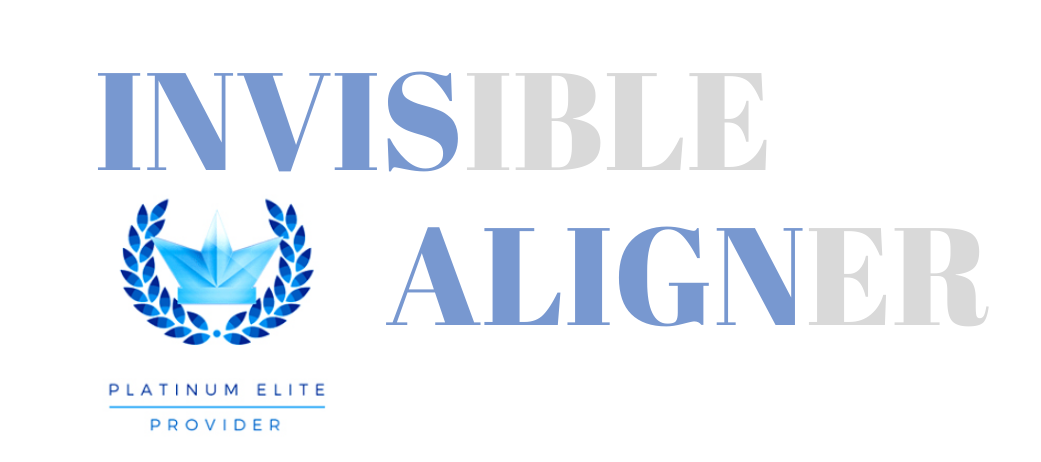
Invisalign® is a clear tooth alignment system, and treatment consists of wearing a series of clear tooth aligners. The entire system was developed in the US, for the purpose of correcting orthodontic irregularities. Treatment is also possible on just one jaw, if required.
Invisalign – what is the treatment plan and am I a candidate?
The Invisalign treatment begins with an examination by the orthodontist to determine whether you are a candidate for Invisalign treatment.
BOOK YOUR APPOINTMENT TODAY, OUR DENTISTS WILL ANSWER ALL YOUR QUESTIONS AND COMPILE A TREATMENT PLAN FOR YOU
Most orthodontic irregularities can be corrected using the Invisalign clear aligners, so most patients are candidates for Invisalign treatment.
If you have one of the following conditions, you are likely a candidate for Invisalign treatment:
1) Overbite
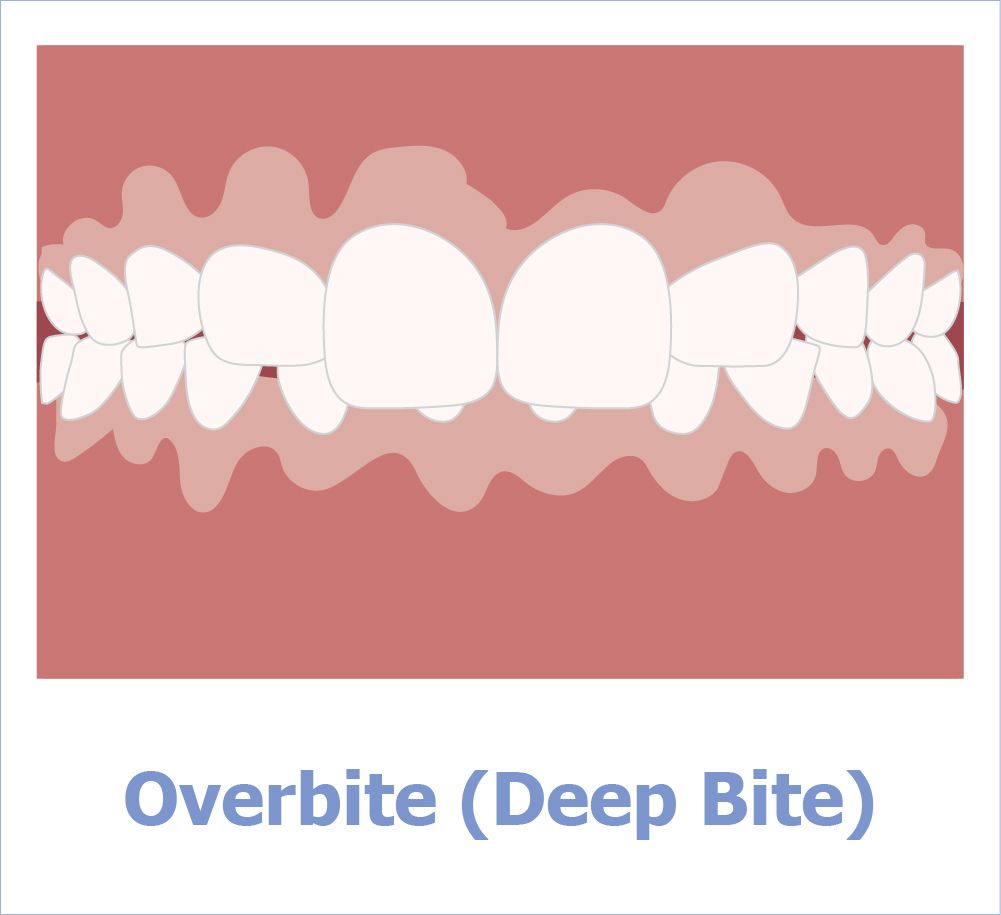
Top teeth extend too far over the bottom teeth. With this anomaly, the front teeth are often more worn than the bottom teeth, and occasionally, the overbite is so strong that the bottom teeth cut into the palate. This anomaly becomes worse with time, and should be corrected as soon as it is observed.
2) Underbite
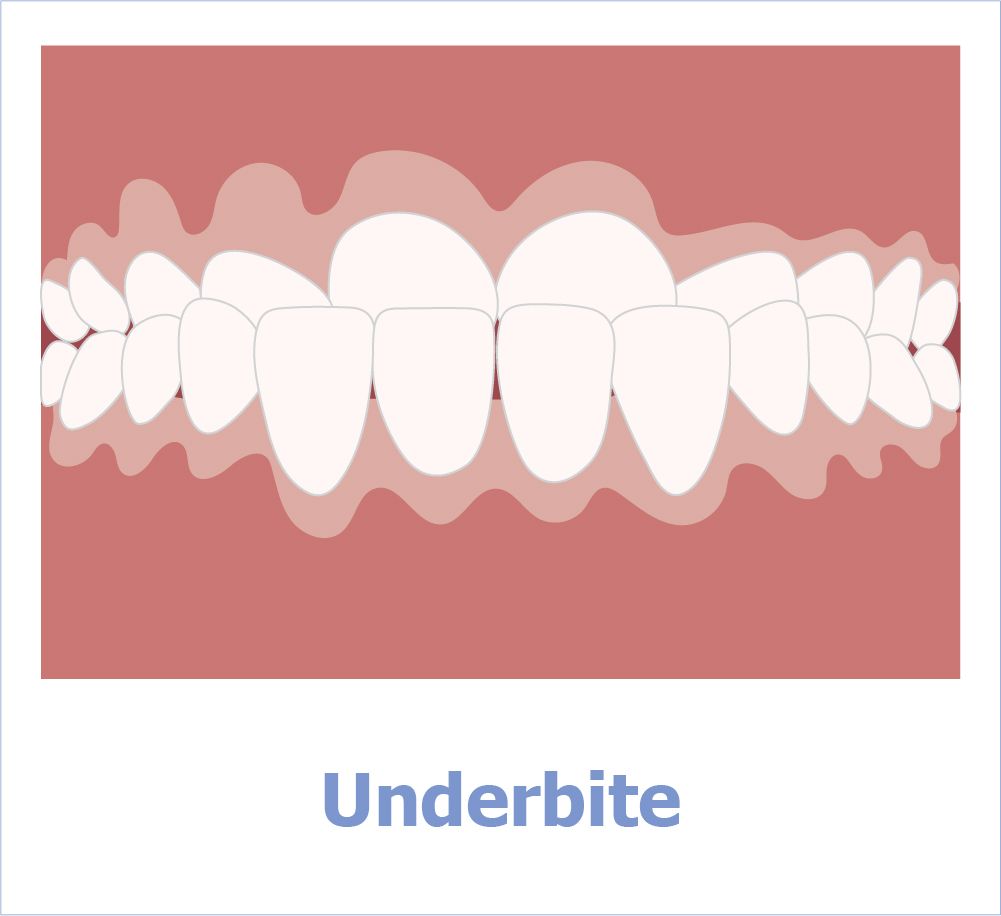
All teeth of the lower jaw extend out further than all the teeth of the upper jaw. This anomaly should be treated as soon as it is observed.
3) Crossbite of the front or back teeth
Crossbite of the front teeth
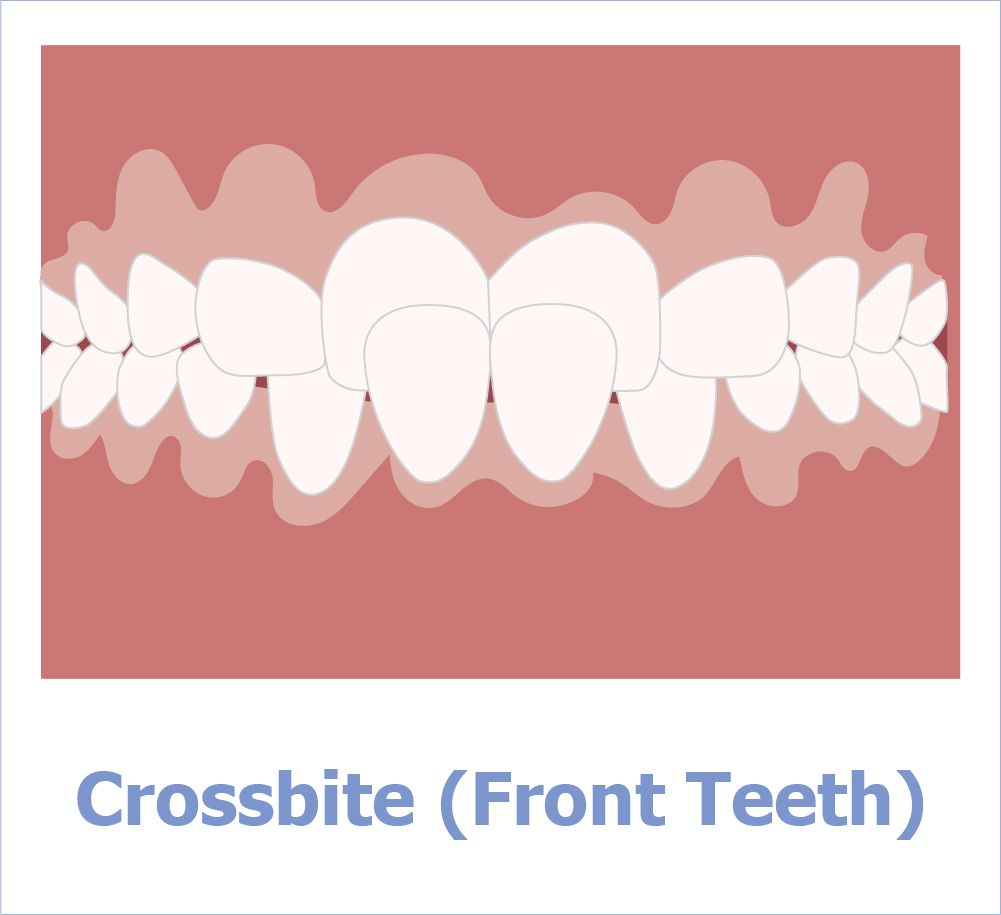
One or more teeth in the lower jaw are irregularly positioned in relation to the upper jaw. This is often an irregular position of the posterior supporting tissue of one or more teeth, and if left untreated, it can severely jeopardise the prognosis for those teeth, or even cause their loss.
Crossbite of the back teeth
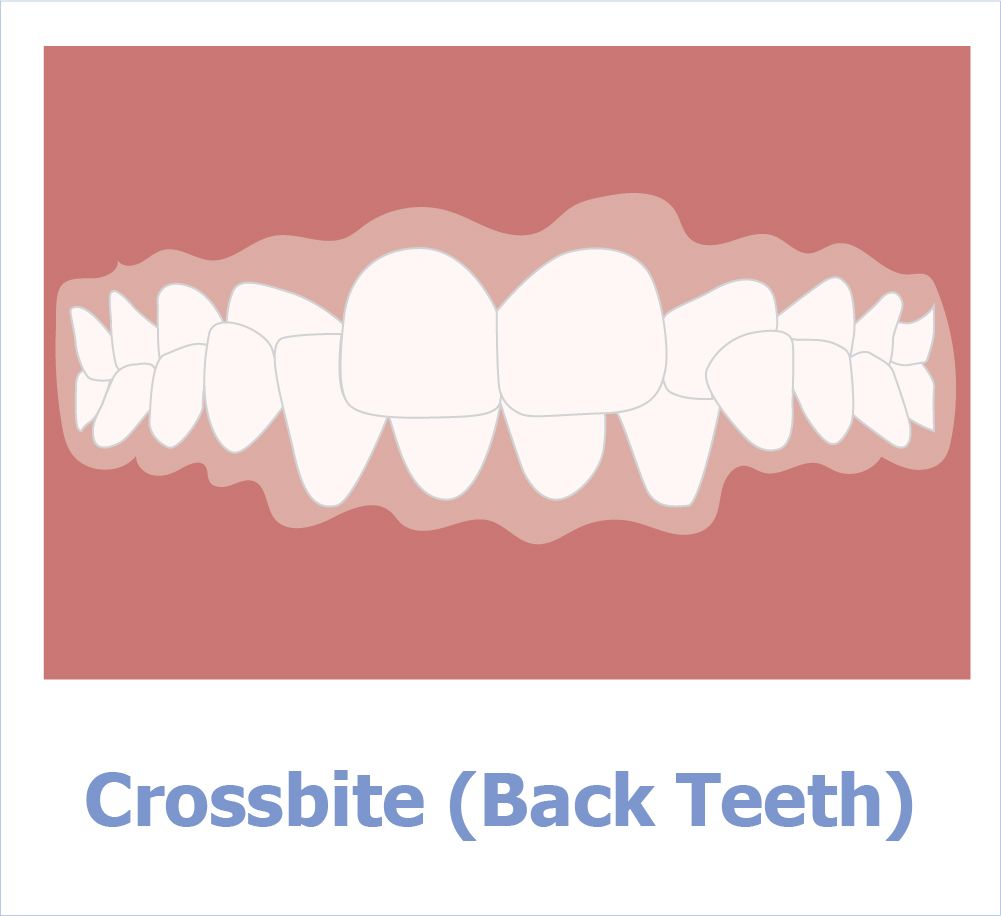
Teeth do not fit together properly but instead, like scissors, bypass one another, and therefore cannot properly cut up food when chewing. Due to this anomaly, the lower jaw can be forced to shift, or the patient may bite their tongue or cheek.
4) Gap Teeth
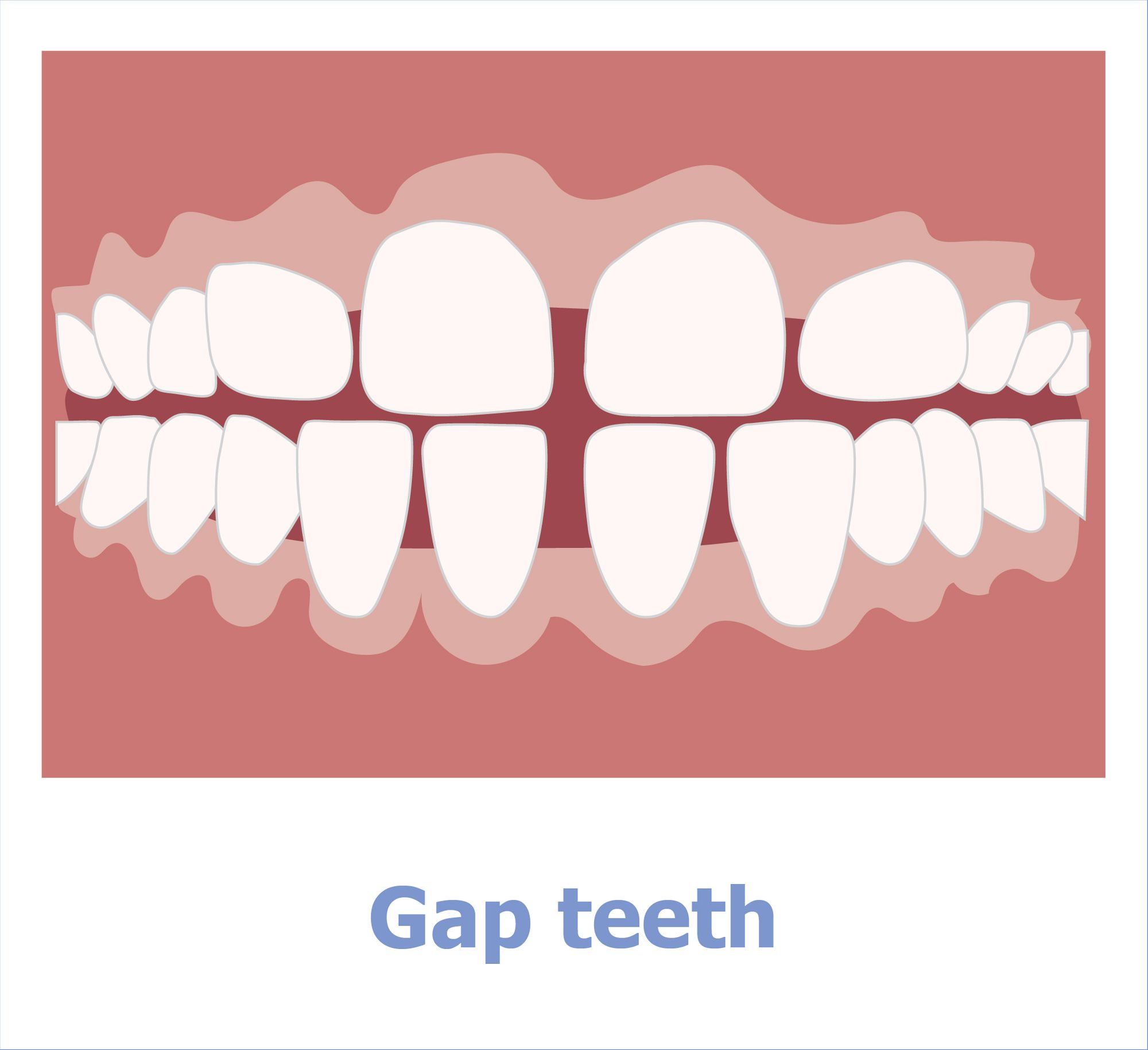
This may be gaps just between the front teeth, or even between all teeth.
5) Overjet
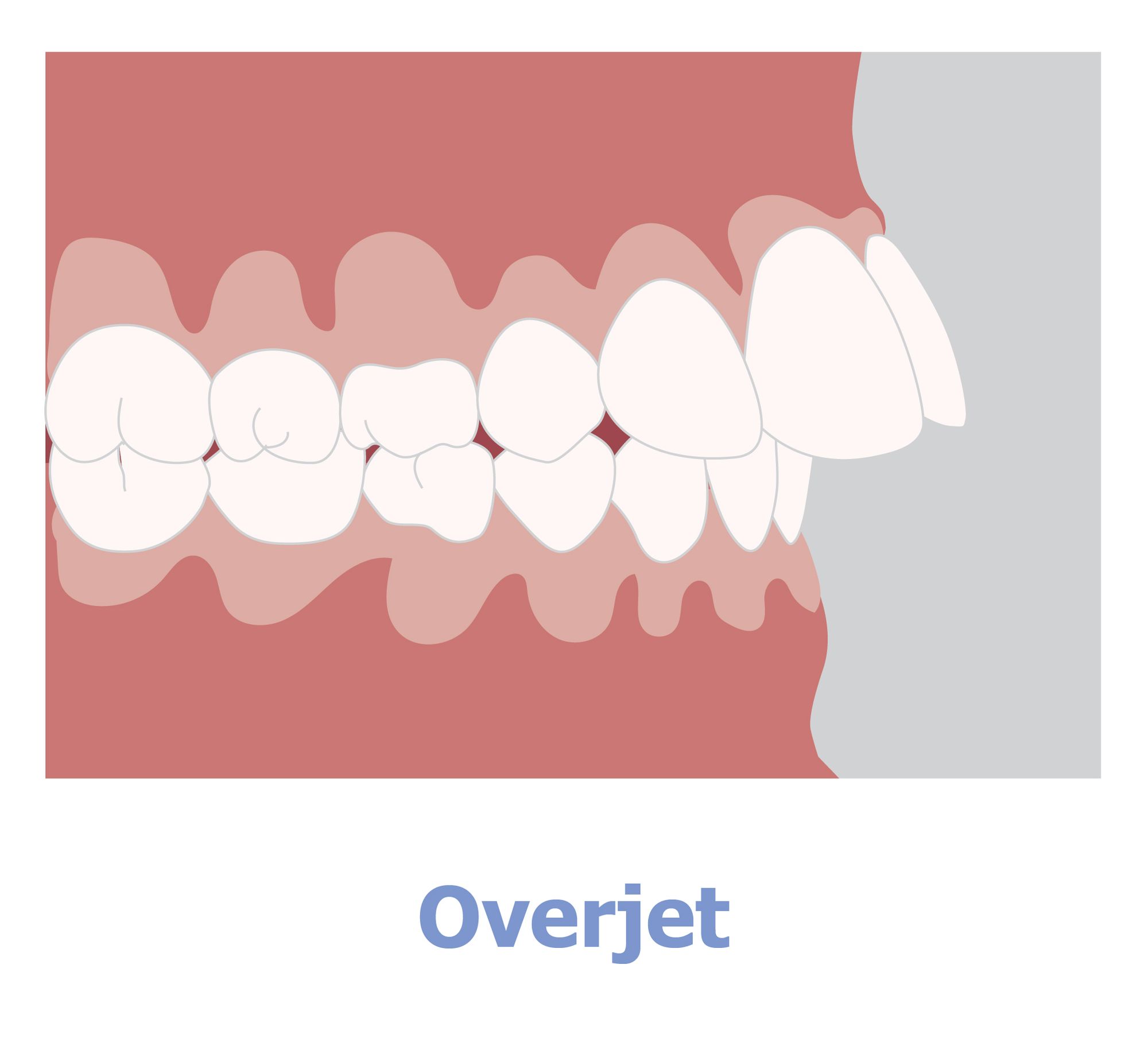
A situation when the top teeth stick out forwards. The patient has difficulty closing the lipsand the lower lip may be reverted inwards.
6) Crowded Teeth
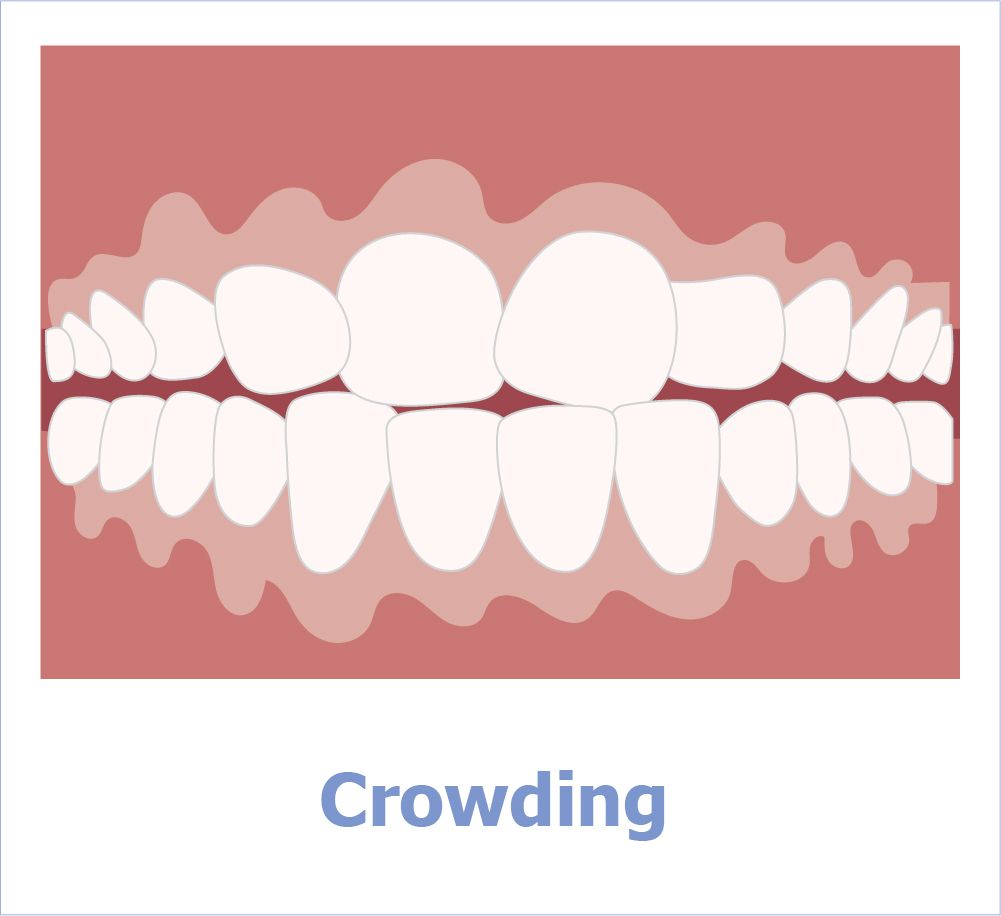
7) Tooth eruption out of place in the tooth arch
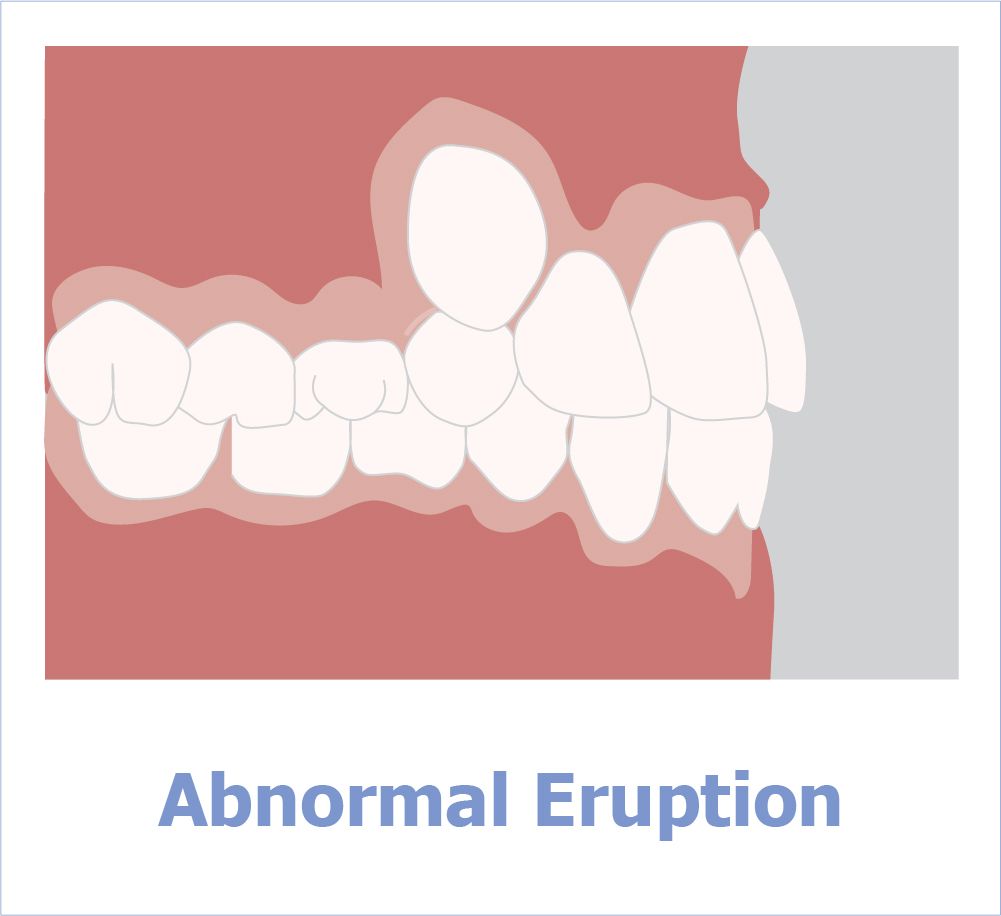
This anomaly, when teeth erupt out of place, is most commonly associated with the premature loss of the milk teeth. The most common situation are the upper eye teeth or lower premolars that erupt in the wrong place.
If you do not have any of the above conditions, but still are not satisfied with your smile, we invite you to come in for an examination and consultation with our dentists, who will offer a solution and propose a treatment plan for you.
Invisalign clear aligners – how do they look and what are they made of?
The Invisalign therapy programme is based on clear aligners. Invisalign aligners were developed by the renowned Dutch company Align Technology, Inc. (Align) and this is the one and only, original and proven, Invisalign therapy.
The therapy consists of a series of clear, plastic, removable aligners, that shift teeth in small increments into the right position.
What does Invisalign look like?
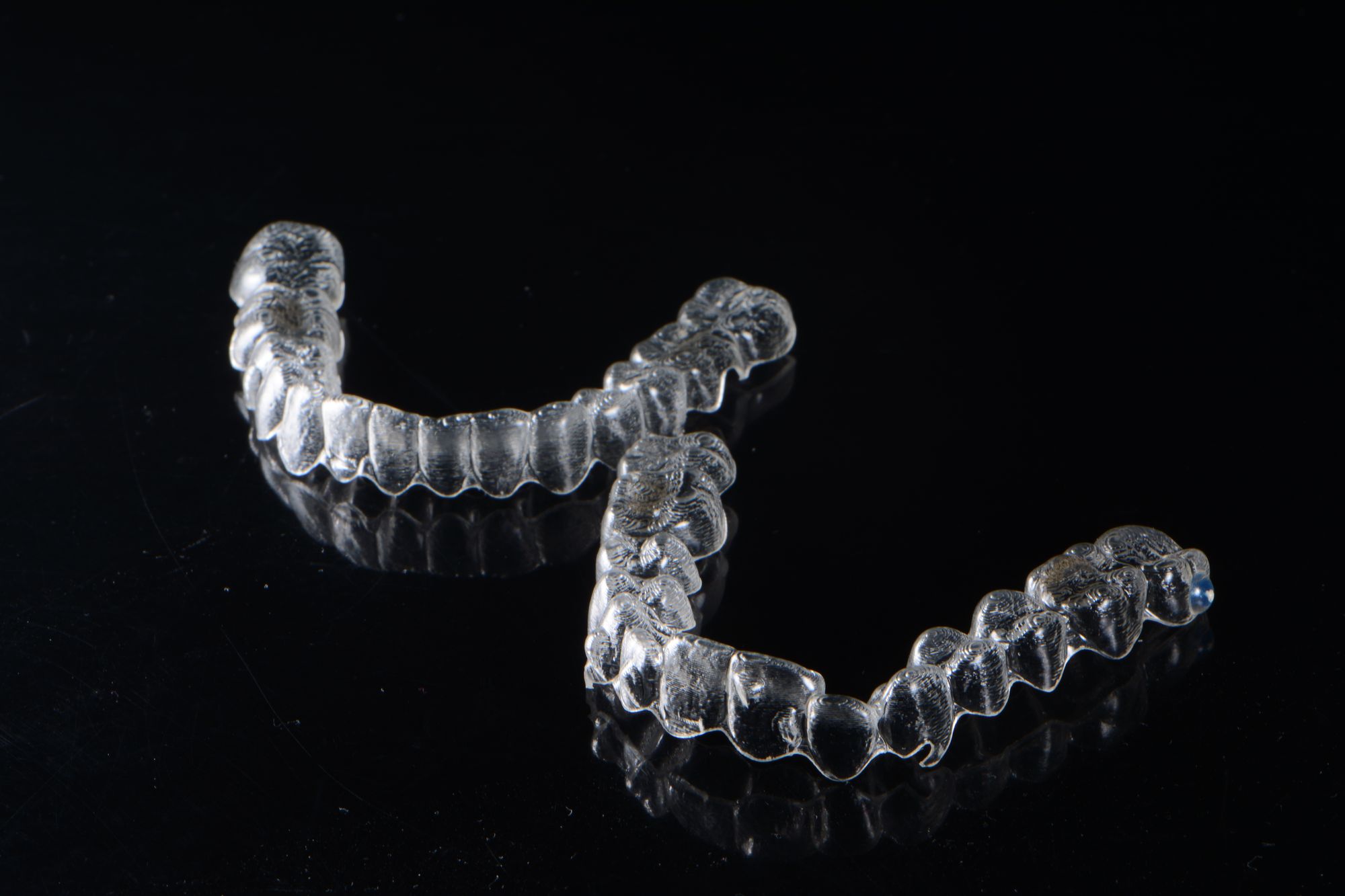
The Invisalign therapy procedure
- After the consultation with the orthodontist, the patient begins the Invisalign® treatment. The orthodontist takes a mould or scan of the teeth or a set of photographs of the current situation, and sends them to the laboratory in the Netherlands together with the recommended therapy.
- Based on the orthodontist’s recommendations, the technicians at the Align laboratory create the software model ClinCheck® to display the expected treatment results. If the patient is satisfied with the displayed model of the results and the course of the therapy, the orthodontist confirms the ClinCheck® treatment plan and the Align laboratory creates the series of clear aligners, fully adapted and completely individualised.
- The number of aligners depends on the complexity of the orthodontic irregularities to be corrected with the therapy, and the laboratory sends the therapy set, where each aligner is numbered.
- The patient receives their predefined therapy set and independently change the aligners according to the orthodontist’s instructions.

Invisalign clear aligners – how long should they be worn?
The clear Invisalign® aligners should be worn from 20-22 hours per days, and removed before meals, and brushing and flossing teeth (unless otherwise recommended by the dentist). The timeframe for switching to new aligners depends on the therapy plan, but is most often every 7 days.
Invisalign clear aligners – how often are check-ups required?
Unless otherwise determined by the dentist, check-ups are required every 6-8 weeks.
“We have had very successful cases without any check-ups at all, as we are really dedicated to having a detailed therapy plan,” said orthodontist Katarina Krajačić, DDM
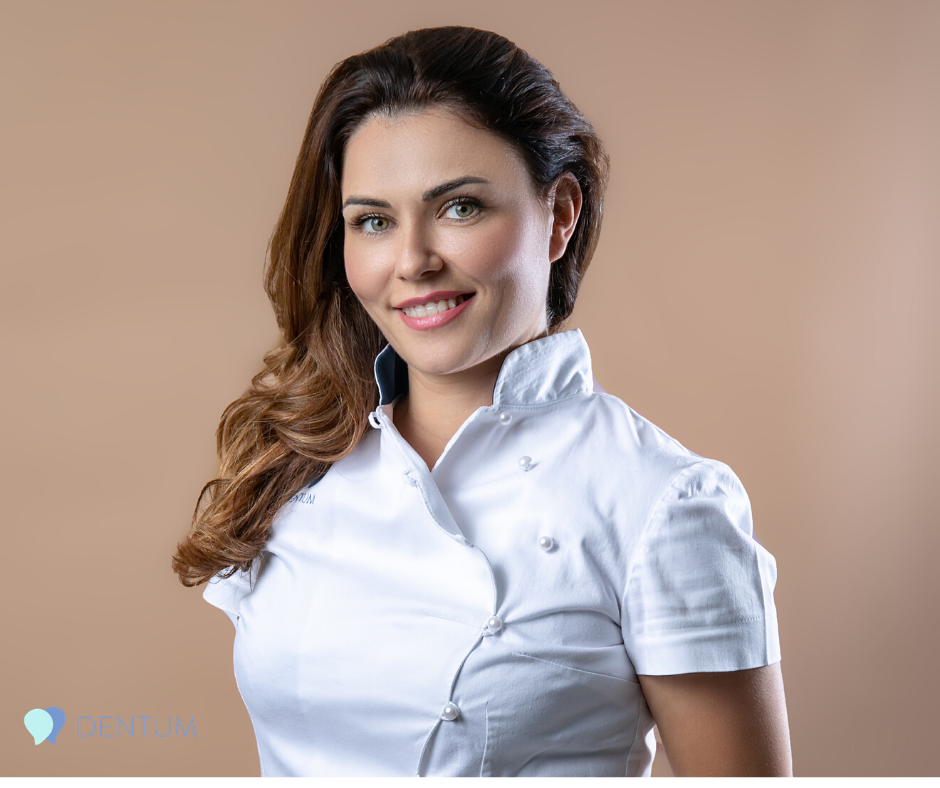
Advantages of the Invisalign clear tooth aligners:
- The clear Invisalign aligners are almost invisible
- Clear aligners have no metal wires or brackets such as those in classic braces
- It is possible to undergo tests such as MRI, unlike classic braces, which need to be removed by the orthodontist before having such tests run
- In the case of an impact, classic braces can damage tissue
- The treatment plan, duration and results are clearly outlined, and known precisely in advance unlike for classic braces
- Unlike classic braces, when wearing Invisalign® aligners there is no difficulty involved in brushing and flossing teeth
- This is an excellent solution for teenagers
- They do not interfere with eating
- During Invisalign therapy, it is possible to improve periodontal health (gums)
What should I know before deciding on Invisalign therapy?
- If the aligners are not worn according to the instructions, this will negatively affect achieving the desired results (the Invisalign therapy requires discipline)
- After switching to the next aligner, you may feel some mild tooth sensitivity
- If proper oral hygiene is not performed after eating, caries may appear
Invisalign– types of clear aligners
There are several types of Invisalign aligners, and after a detailed examination, the orthodontist will determine which type is best for you.
If you wish to correct your teeth with the Invisalign clear aligners, book your examination and consultation today with our orthodontist, Katarina Krajačić, DDM.
Invisalign Full therapy
The Invisalign Full therapy can correct even the most complicated irregularities.
As a rule, the Invisalign Full therapy lasts 12-18 months, and a new aligner is used every 7 days. The therapy programme requires check-ups every 8–12 weeks, where the orthodontist will verify the progress achieved. If you wish to achieved results even faster, the orthodontist may recommend the installation of small, transparent brackets on your teeth, which then support the clear aligners.
The minimum number of aligners in the Invisalign Full therapy programme is 14 aligners, though there maybe more, the number of aligners is unlimited, until the desired result can be achieved.
Invisalign i7 therapy
The Invisalign i7 therapy programme is the ideal solution is you need to correct minor irregularities. Invisalign i7 is recommended for those patients whose problems can be resolves in 7 to 14 weeks, with just 7 aligners in the entire therapy programme.
Invisalign Lite therapy
This is the ideal solution for those patients for whom the Invisalign Full therapy programme is too much, and the Invisalign i7 programme is not enough to correct minor tooth irregularities. Invisalign Lite therapy is offered as a solution for patients who want to avoid the Invisalign Full therapy, and to avoid higher costs of therapy.
The estimated duration of the Invisalign Lite therapy programme is 14 to a maximum of 28 weeks, if the patient wears every aligner for 2 weeks.
If you are not certain which type of therapy would be best for you, book a specialist orthodontic examination today. Our dentists will be happy to answer any questions you have!
Invisalign clear aligners – who is a candidate?
All teens and adultswith good oral health are candidates for Invisalign therapy. Invisalign therapy is also suitable for patients with periodontitis due to the gentle forces placed on the teeth, and the ability to perform complete hygiene.
Which patients are NOT ideal candidates for Invisalign therapy:
- Those who have not yet lost all their milk teeth
- Those who wear dentures
In order to find out if you are a candidate for Invisalign therapy, book your orthodontic exam with our experts.
Invisalign, metal and aesthetic braces – how do they differ?
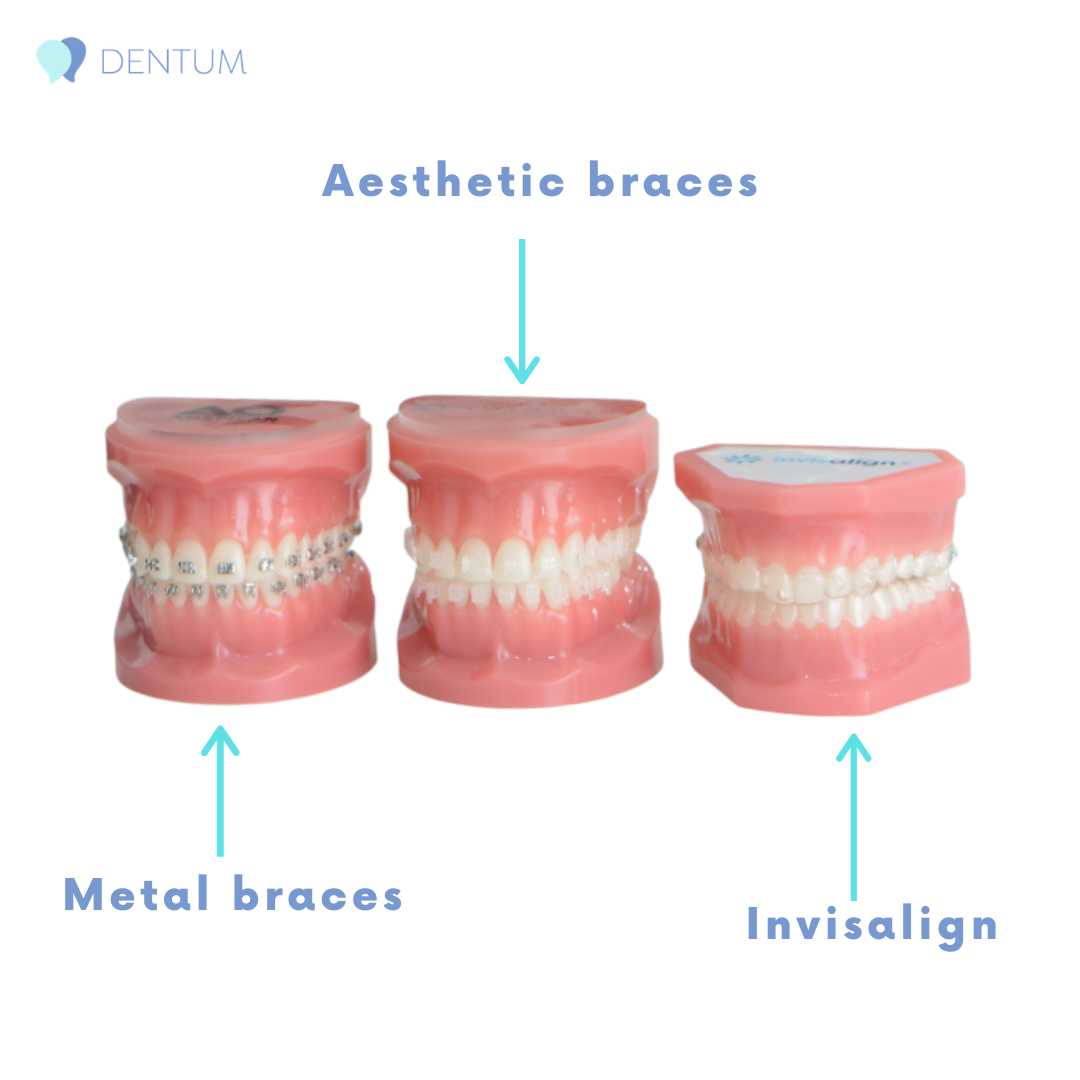
The main advantage of Invisalign therapy compared to metal braces is that the clear aligners are virtually unnoticed while wearing them. Since the Invisalign aligners are virtually invisible, those around you will not even notice you are wearing them.
Advantages of Invisalign clear aligners in relation to traditional metal braces:
- The clear Invisalign aligners are less embarrassing to wear
- Invisalign clear aligners can be removed as need (mealtime, brushing) while metal braces cannot be removed without a visit to the dentist
- Unlike metal braces, with the Invisalign therapy, there is no need to choose which foods you can and cannot eat, since the aligners are removed before mealtime
- Wearing the Invisalign aligners is more hygienic than wearing metal braces
- Brushing the teeth is much easier when wearing Invisalign, as the aligner is easily removed, allowing you to completely brush your teeth – one of the reasons why this is a better solution than braces for periodontal patients
- In the Invisalign therapy, check-ups are not required as often with the orthodontist. The therapy programme is carried out almost independently, while following the orthodontist’s instructions.
- Better control of forces in the Invisalign therapy more effectively moves teeth, with much less discomfort than with braces
How are Invisalign aligners cleaned?

The Invisalign aligners are cleaned with tablets that come in the package with the aligners, in combination with an ordinary toothbrush.
My teeth moved again after wearing braces, can Invisalign therapy help?
If your teeth have moved after wearing traditional braces, they can be returned into place using the Invisalign clear aligners. Reshifting of teeth back into their original position occurs most often when patients do not follow the dentist’s instructions after therapy, i.e. do not wear the aligners to the extent necessary.
Book your specialist orthodontic exam
How long should I wait to change the Invisalign aligner?
Just how much time will pass before changing from one aligner to the next depends on the patient, and the time is determined by the orthodontist. The aligners are developed based on the dentist’s recommendation, and the detailed calculation of each therapy plan is completely individual, however, on average, the aligners are changed every 7 days.
Can I chew gum while wearing the Invisalign aligners?
It is very important to remove the aligners before eating, chewing gum or drinking, as there is the possibility that chewing will damage the surface of the aligners or permit bacteria to enter.
Poor hygiene can lead to bad breath, bleeding of the gums, and caries.
How does smoking affect the Invisalign therapy?
As with food and drink, it is recommended that the aligners be removed when smoking to prevent them from yellowing and causing bad breath. Patients who change aligners every 7 days will not have problems with this, because even if they do yellow a bit, they will soon be changed.
Are Invisalign aligners made out of plastic?
Though the Invisalign aligners may appear to be plastic, they are not. The Invisalign aligners are made from special thermoplast, medical grade material. This solid material is FDA approved and does not contain gluten, latex, BPA(industrial chemical used to make plastics) or BPS (a BPA-substitute).
Retention time after completion of the Invisalign therapy
After completion of the original Invisalign therapy, the retention phase begins. In the retention phase, aligners are worn that keep the teeth in the proper position, and prevent teeth from returning to their prior positions.
If you are not satisfied with your smile, and you wish to correct your teeth, you’re your exam and consultation with orthodontic specialist Katarina Krajačić, DDM at the Dentum clinic.
Give us a call or drop us an e-mail, and we will be happy to answer all your questions.
Read also these articles:
Real stories, real smiles
VisagiSmile technology – digital smile simulator
7 facts about Invisalign® that will change your mind about orthodontic treatments forever
UK LINE: 020 376 939 73
EMAIL: smile@dentum.com
ADDRESS: Gradišćanska 36
10000 Zagreb, Croatia